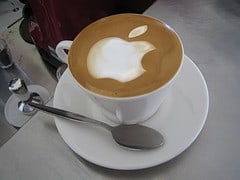 A strong partner of working wider is thinking wider. This post examines how companies and leaders differentiate themselves.
A strong partner of working wider is thinking wider. This post examines how companies and leaders differentiate themselves.
One of my favorite tasks each month is participating in the Band of Angels Screening Committee. Our task is to winnow six potential deals for start-up funding down to three which will be presented at the monthly membership meeting.
We’re always asked what are we looking for? A top item on my list is differentiation: how is what this company offers different from what’s already out there? This is critical because a startup has to drive itself into the minds of customers as well as the marketplace. If what they offer is not significantly unique and valuable to customers, their chances of success are small. And if that uniqueness can’t be protected, their success will be fleeting.
This also applies to established competitors as well as people. In our wider world, everyone has plenty of choices of suppliers or candidates for jobs. We’re always looking for value that is distinctive and sustainable in some new way. Sustainable differentiation is the tap root of competitive advantage as well as innovation.
Yet most products, services and even people offer more of the same. Hollywood is much quicker to fund a remake of “The Karate Kid” than a brand new movie. You tell me the critical difference between Gatorade and Powerade. MBA programs across the globe churn out young leaders with essentially the same analytics and conceptual toolkits. Why is it so hard to not just think, but actually be different?
The problem is two-fold. First, people and companies hate to make mistakes. We all know a company or person that got beat up by Wall Street or in a performance review for missing expectations. Each of us has padded a schedule or low-balled an objective to provide wiggle room.
Second, being different puts you outside the norm. You stand out either as a visionary or a fool. You won’t know which for some time. For example, I can’t think of a technology or company that successfully disrupted their industry that wasn’t strongly criticized in the early days.
This sets up the Catch-22 of differentiation. How do you create new and unique value without failing? The obvious answer is you can’t. At the same time, I can’t keep track of how many executives I’ve met over the years who earnestly tell me they want change but reject anything that requires them or their companies to do anything differently. Invariably, they want a priori proof that the proposed change will work from examples or benchmarking.
However, by the time there are enough examples to cite or benchmark, the degree of newness, difference and therefore advantage to be gained, is diminishing. Besides, most examples are met with resistance such as “yes, but we’re different.”
Here’s how to crack the code: look outside for data but stop looking there for the answer.
Great leaders constantly scan, observe and reflect on what’s happening in their environment but they use that data as grist to create insight. Data lights up their thinking but it’s the connections and meaning they make with the data that generates insight, excitement and ultimately, advantage. For example, Fred Smith’s procurement experience in the military stimulated the insight that founded FedEx. People and companies rise to the top do by expanding into their potential; not by becoming who they are not.
What does this look like in practice? Let’s take a look at Apple. Keep in mind that differentiating a business requires finding unique value for which customers will pay money. Once found, executing requires aligning one’s organization to deliver that value. If the organization is not aligned, old habits will quickly mute any attempts to create new value.
Here are five ways Apple does both:
First, Apple is clear about who they serve. More importantly, they are willing to say no to those they don’t.
- The Apple design bulls-eye is the consumer. Apple will tune or tweak products such as iPhone interoperability with Microsoft Exchange servers for commercial needs at the edge but they have never been the bulls-eye.
Second, Apple’s “design voice” embodies a user-centric point of view that bridges gaps unseen or unaddressed by others.
- In computing, the Mac interface bridged across the user interface gap in MS-DOS. iTunes made it easier to buy and load music on MP3 hardware. The iPhone applied the connective power of smartphones beyond mimicking desktop email to a constellation of new mobile applications.
Third, Apple limits the innovations in each new product generation. They focus on a few that sparkle while re-using much of the original product design.
- By focusing their resources on a few highly differentiated innovations, Apple brilliant marketing wows customers by inflating the innovations’ contribution while controlling cost, resources and maintaining stability.
Fourth, Apple’s processes and pacing are pegged to a relentless pursuit of “insanely great products”.
- Rarely first to market, Apple uses familiar engineering design disciplines such as reviews and schedules. The difference is they do not compromise the customer experience for time and often cost. Nor will they pursue an opportunity until it moves into their user-centered design sweet spot.
Fifth, their business practices are aligned to their customer; not Wall Street or other stakeholders.
- Meeting Wall Street’s can expectations can drive executives to take actions that are counterproductive over the long term. One could argue that in light of their current size and success, Apple’s historical lack of focus on other stakeholders needs’ (e.g. Wall Street and regulatory bodies) may hurt them. Perhaps so, but they can grow into that without diminishing their focus on customer requirements.
Don’t for a minute think that what Apple does will work for your job or company. If you go down that path, you’ve missed the entire point of this article. Consider the above as data to generate your own insights about what will differentiate your business or you as a leader. Ask yourself:
- What is our/my uniqueness that customers/others readily see?
- Where does that uniqueness offer differentiated value for which they’ll pay?
- How can I showcase that value so it’s easily seen?
- Where can I apply or extend that value?
- Is how we spend time and work aligned with delivering that value?

 I'm Christopher Meyer - author of Fast Cycle Time, Relentless Growth and several Harvard Business Review articles.
I'm Christopher Meyer - author of Fast Cycle Time, Relentless Growth and several Harvard Business Review articles. 